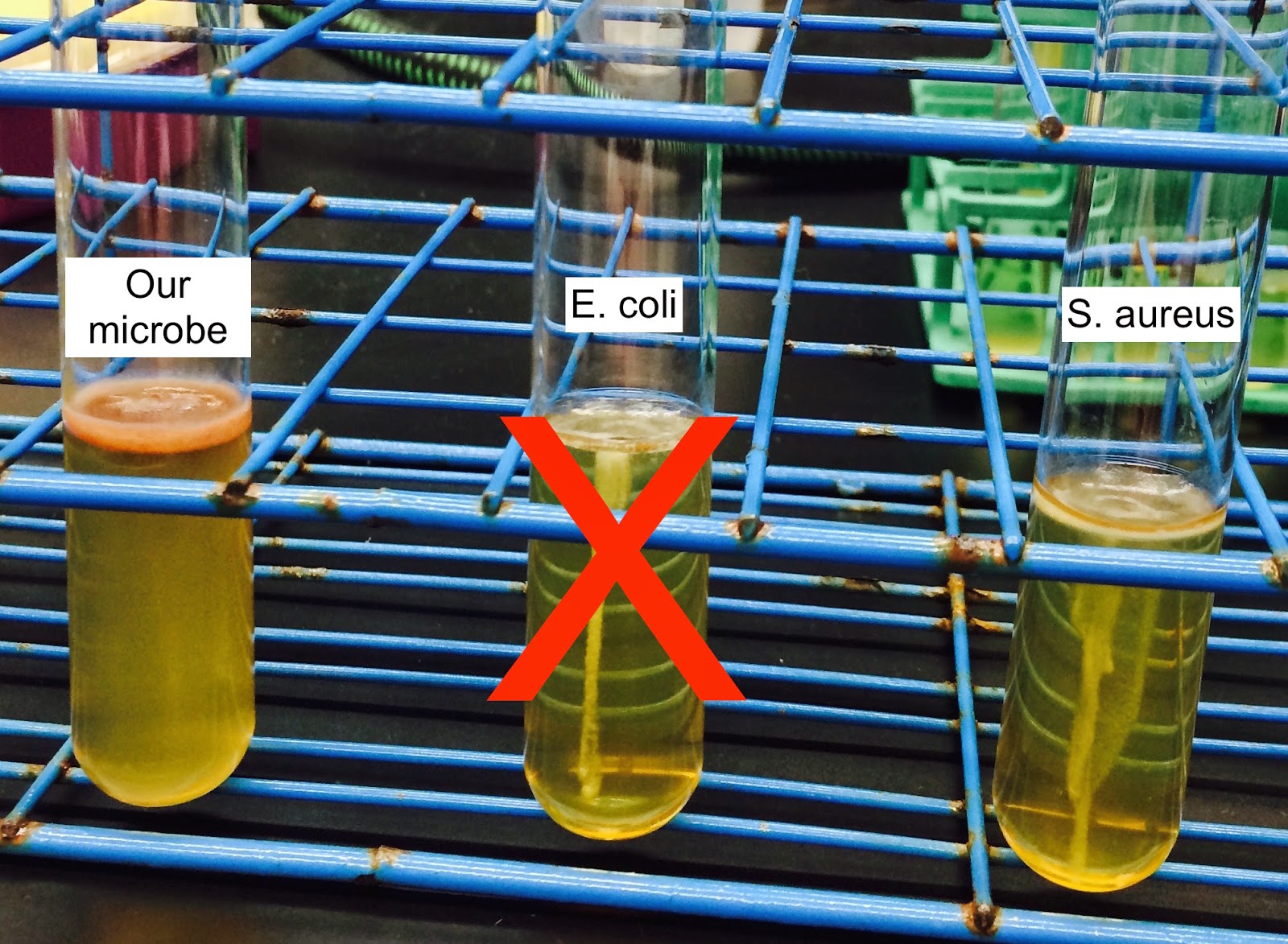This past week in lab, Austin and
I discovered another feature about our little microbe. We used the soft agar
deep test to determine if our microbe is motile or not. For the experiment, we
used a motile control (E. coli) and an
immotile control (S. aureus).
However, the E. coli sample did not
behave properly because the results indicated that the sample was immotile,
which is not true. As seen in the picture below, our microbe was very motile
and moved all throughout the agar, which was determined by the cloudiness of
the sample. A thick layer of microbes also developed on top of the agar.
 |
| Soft agar deep test results |
So what makes bacteria motile or
immotile? The main structural feature that allows microbes to be motile is the
presence of flagella, which can vary in number and arrangement. As we studied
in cell and molecular biology, flagella are anchored to cells by a hook that
attaches to the basal body. A rotary motor unit does the actual whipping of the
tale and can vary in speeds from 200 to 1000 revolutions per second, which is
crazy fast!
There are advantages for microbes
to evolve to be motile. The presence of flagella allows bacteria to swim
towards nutrients and dodge harmful substances. They can also swim to new areas
and colonize. Many bacteria are motile, however, some bacteria are immotile and
have evolved to stay that way. A reason for remaining immotile is dependent on
the types of fluid the bacteria travel through. Flagella are not useful when moving
through viscous media and microbes that live in these environments do not want
to be motile.
Each week in lab, we are continuously
getting closer to identifying our microbe. To ensure the accuracy of our endospore verification test from last week's lab, we reran the experiment. The results ended up being the same but this time the controls produced the expected results. Below is a new picture of our endospore results.
 |
| Results from endospore verification redo |
Hopefully next week, we will be able to narrow down the possible identifications of our microbe.
Check back next week for an update from Mills!
-Anne
No comments:
Post a Comment